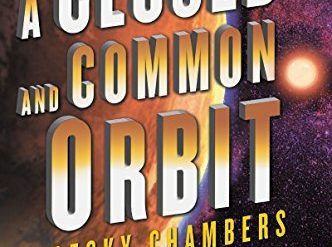
George W. Bush served in the Oval Office from 2001 to 2009. His two terms in office encompassed 9/11, the invasions of Afghanistan and Iraq, Hurricane Katrina, and the global financial collapse that set off the Great Recession—surely, the most consequential sequence of events in any eight years in all of American history to that point. And Bush himself emerged from the experience relegated to the bottom rungs of history’s ranking of the first forty-three American Presidents. So, you might wonder, what could a Republican novelist inclined to sympathy make of this story? And you’ll find the answer in Thomas Mallon’s intoxicating new book, Landfall, the third in his trilogy of tales about Bush and the two Republican Presidents who preceded him. Mallon has written a sympathetic portrait of George W. Bush the man, but his assessment of the man’s Administration is scathing.
Estimated reading time: 5 minutes
A plethora of boldfaced names mix with two fictional protagonists
As in his earlier works about Richard Nixon (Watergate) and Ronald Reagan (Finale), Mallon inserts a handful of fictional characters in the historical setting, and they carry the story forward. Boldfaced names predominate; many become featured characters as well. In Landfall, the fictional Allison O’Connor and Ross Weatherall take center stage. But they share the spotlight with George W. Bush and members of his family (Laura Bush, Barbara Bush, and George H. W. Bush); Donald Rumsfeld; Condoleezza Rice; former Texas Governor Ann Richards; Nancy Reagan; former Senate Majority Leader Bob Dole; and journalist Christopher Hitchens. And Vice President Dick Cheney hovers in the background, a glowering presence. Even Henry Kissinger, Prince Charles, and Stephen Colbert wander onto the scene.
Landfall by Thomas Mallon (2019) 497 pages ★★★★★
A critical but sympathetic portrait of George W. Bush
Mallon’s treatment of George W. Bush is critical but sympathetic. Bush comes across as far better educated and more intelligent than he was portrayed in the press. He is shown to be a caring person, frequently moved to tears by the suffering of wounded troops or the victims of Katrina. And even his mother looks on him as weak. “All of this should have fallen to Jeb,” Mrs. Bush believes, “the son she admired more and loved less.” And he is repeatedly forced into corners by Rumsfeld and Cheney, both far more aggressive than he. In Mallon’s telling, Bush leaves office believing that his legacy will always be seen as having started a war he couldn’t win. Which, in the end, seems about right.
Two mid-level staffers illustrate the shifting sands of federal policy
In the course of the story, the two protagonists (Allison and Ross) shift positions from supporting the Administration to opposing it, or the reverse, in response to the wars in Iraq and Afghanistan and Hurricane Katrina. In the Prologue, the two meet—and kiss—as sixteen-year-olds at a fundraising party in Lubbock, Texas, for George W. Bush’s campaign for Congress in 1978. Then the scene jumps a quarter-century later to Washington, DC in 2005 and follows Bush, his family, and his team for the next two years.
A sentimental Bush plays matchmaker
During this same period, Allison and Ross make their ways separately into mid-level positions in the Bush Administration. Allison, a long-time Army lawyer, gains a spot on the staff of the National Security Council under Donald Rumsfeld’s patronage. Ross, an academic historian, finds himself in a key position at the fictional National Endowment for the Arts and Humanities. (He “had spent a long time and a lot of effort arriving at the second outermost ring of the Bush administration. . . He might be on the Pluto-like periphery . . . but he was part of it.”) Both eventually come into the President’s orbit, she as a contrarian adviser on the war in Iraq and he as a critical presence in New Orleans during and after Katrina. And in the end the sentimental man in the Oval Office plays matchmaker.
“Factionalized derangement” and venom from perfectly rendered characters
Mallon accurately portrays the muddled policy of the Bush Administration—Allison views it as “factionalized derangement”—and the often bitter Cabinet-level clashes, primarily between Rumsfeld and Cheney, on one side, and Rice on the other. Mallon writes of “those alternating spits of venom from Dick to Condi to Don.” In his telling, both Rumsfeld and Cheney routinely speak of Richard Nixon as “the boss,” harkening back to their early years in public service. But his skill as a mimic is even more remarkable.
Each of the public figures speaks as they spoke at the time. They all come across as perfectly rendered personalities, if media accounts during the time can be believed. But, remarkably enough, Mallon’s acknowledgments don’t hint at even the most cursory personal contact between him and any of them, much less interviews that might have allowed him to absorb the cadence of their speech in private. Still, he seems to have gotten things right. In the final analysis, this sympathetic portrait of George W. Bush depicts a failed administration, a conclusion most Republicans today would seem to concede.
About the author
Thomas Mallon has written ten novels, seven works of nonfiction, and a slew of shorter pieces. Most of his work is categorized as historical fiction. He is Republican and openly gay. Perhaps in years to come Mallon will produce a fourth volume about the present occupant of the White House—assuming that any writer of fiction could possibly outdo the President himself in making stuff up.
For related reading
Previously I’ve reviewed four other political novels by Thomas Mallon:
- Watergate (Watergate through a novelist’s eyes)
- Finale: A Novel of the Reagan Years (Ronald Reagan deconstructed in a new novel)
- Fellow Travelers (Thomas Mallon on America’s third Red Scare)
- Dewey Defeats Truman (A terrific political history novel)
And be sure to check out Echo House by Ward Just (Who wields the real power in Washington, DC?) and Oppo (Peter Rena and Randi Brooks #3) by Tom Rosenstiel (Political opposition research dominates this edgy thriller).
You might also be interested in:
- The five best novels about politics
- Top 20 popular books for understanding American history
- 20 most enlightening historical novels
- Top 10 nonfiction books about politics
You might also check out Top 10 great popular novels.
And you can always find my most popular reviews, and the most recent ones, on the Home Page.



























